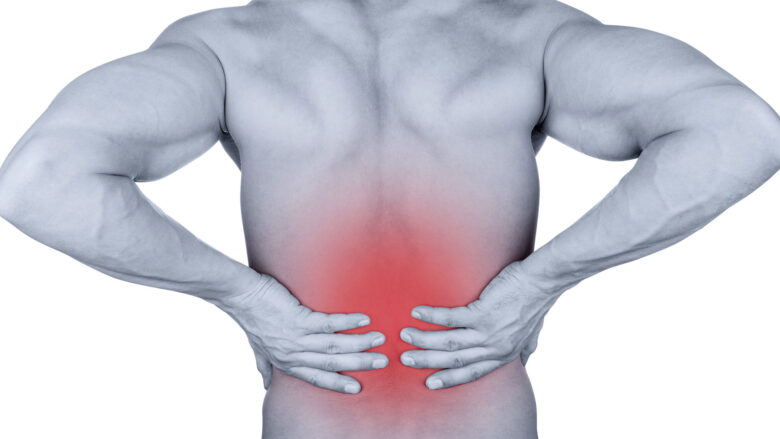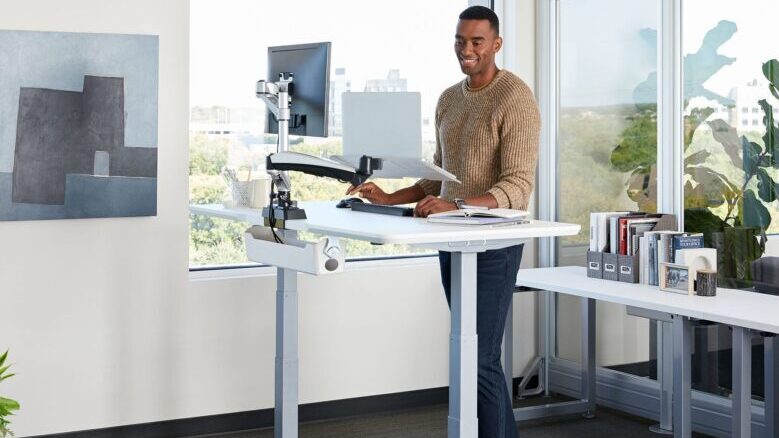Ergonomics is the study of people’s efficiency in their working environment. It’s about designing workspaces that align with our physiological and psychological needs. In today’s digitized era, where most tasks demand hours in front of a computer, understanding and implementing ergonomic principles has become crucial.
Not only does it boost productivity, but it’s essential for long-term health and well-being. Before exploring the benefits of standing desk for your health and posture, let’s return to our traditional desk constructions.
The traditional desk – the place where great ideas are born, tasks are completed, and careers are built. But when did sitting become the norm? If you journey back a few centuries, craftsmen, writers, and other professionals often used high desks and stood.
It was the Industrial Revolution and the widespread use of typewriters and office work that popularized the sitting desk. Fast forward to today, where the sitting desk is ubiquitous and has inadvertently contributed to an increasingly sedentary lifestyle. But what price have we paid for such convenience?
Lumbar and back pain

Source: painhealth.csse.uwa.edu.au
Sitting for extended periods puts immense pressure on the lower back and spine. This can lead to lumbar pain and other related spinal issues. The human body is designed for movement, and sitting restricts that, forcing them back into potentially damaging positions.
Neck strain
Tilting the head to view a computer screen strains the cervical spine, leading to neck discomfort. As many individuals unconsciously lean forward while working, this misalignment exacerbates neck issues.
Risk of chronic diseases
Research indicates that prolonged sitting increases the risk of chronic illnesses, including cardiovascular disease. The sedentary nature of sitting can slow down circulation, increasing the risk of blood clots and stressing the heart.
Metabolic slowdown and weight gain
A seated posture means your muscles are not contracting as they would when you move around. This lack of activity affects the body’s metabolism, potentially leading to weight gain and associated health issues. Learn how some activity on a treadmill helps with weight loss.
The traditional sitting desk, while a staple in many work environments, has its drawbacks. It’s essential to recognize these issues and find solutions that support both our productivity and health.
Standing Desks: Not Just a Trend

Source: vari.com
In the dynamic landscape of office designs and productivity hacks, standing desks have emerged as a frontrunner. To some, they might seem like the latest fad – a fleeting obsession for health-conscious millennials. However, the shift towards standing desks is anchored in solid scientific research, not just passing fancy.
The Science-Backed Benefits of Using a Standing Desk
Reduced Risk of Health Concerns
Studies have shown that using standing desks can decrease the risk of obesity, diabetes, cardiovascular disease, and even certain types of cancers. When we stand, our bodies naturally burn more calories and process blood sugar more efficiently.
Spinal Health
Standing encourages better posture compared to the slouched position many adopt when sitting. This can alleviate back and shoulder pain, common complaints among those working desk jobs. Check our article and learn about back health at the office
Longevity Boost
Some research suggests a link between increased sitting time and reduced life expectancy. By standing more, we could potentially add precious moments to our lives.
Intermittent movement

Source: actiu.com
The magic of alternating between sitting and standing:
Balance is key. While standing desks offer numerous benefits, standing for prolonged periods isn’t the goal. The magic lies in alternating postures. By frequently shifting between sitting and standing, you ensure muscle activity, improved circulation, and reduced physical strain. Devices like sit-stand desks make this transition seamless.
Standing Desk = Better Energy & Focus? Exploring the Mental Benefits
Increased Alertness
Early adopters of standing desks often report feeling more awake and alert. The act of standing promotes blood flow and can help keep the drowsy mid-afternoon feelings at bay.
Enhanced Productivity
With increased alertness comes improved focus and productivity. Some users find that they are more engaged in their tasks when standing.
Mood Booster

Source: ohow.com
Physical activity, even just standing, can release endorphins, the body’s natural mood elevators. A standing desk might be your unexpected ally against office blues.
Getting the most out of your standing desk experience requires thoughtful integration into your daily routine. Transitioning from a primarily seated workday can be challenging. Hence, it’s vital to gradually adjust to this new ergonomic setup. Start by standing for short durations, perhaps 20 minutes every hour, and then increase as your endurance grows.
Remember, the aim isn’t to stand all day but to find a healthy balance. Listening to your body is crucial; when fatigue sets in, take a moment to sit, ensuring that overexertion doesn’t lead to new health issues.
Enhancing the standing experience means investing in tools that enhance comfort and productivity. Adjustable monitor arms can aid in maintaining a neutral neck position, reducing strain. Meanwhile, ergonomic keyboards and mouse pads ensure that your hands and wrists are in optimal alignment, mitigating potential repetitive strain injuries.
For those hesitant about diving straight into the world of standing desks, desk converters can be an excellent intermediate step.
These devices sit atop traditional desks, allowing you to alternate between sitting and standing, offering flexibility without a complete overhaul of your workspace. Embracing these strategies and tools ensures that you get the best out of your standing desk journey.
